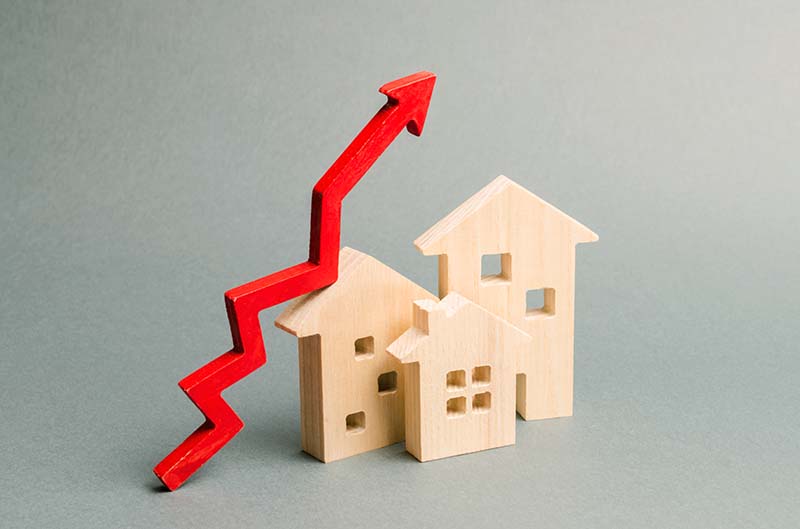10 Multifamily Housing Trends & Statistics in Canada: 2025 Update
-
Jana Blagojevic
- Last updated:

Note: This article’s statistics come from third-party sources and do not represent the opinions of this website.
Multifamily properties are defined as apartment buildings with more than two units, with shared facilities but private rooms. These units are usually divided by separate entrances and positioned on different levels. One person owns the entire building and can choose to lease a particular apartment and live in one of them. In Canada, 20% of the entire economy belongs to the multifamily market, which is constantly in high demand.
If you’d like to learn more about multifamily housing trends in Canada, how the multifamily housing market currently stands, and its value, read on below.
The 10 Multifamily Housing Trends & Statistics in Canada
- The number of issued multifamily home building permits in Canada was approximately 67,000 in 2018 and reached nearly 85,000 by 2021.
- In 2018, the number of multifamily homes in Canada reached 4.96 million, with expected growth to 5.39 million by 2023.
- The pandemic heavily impacted the student population living around campus. The vacancy rates around The University of British Columbia increased, going from less than 1% to 13%.
- The multi-housing market makes up around 20% of the economy in Canada, which may slow down due to the increase in borrowing rates.
- The growth in lease rates reflects the strong demand for apartment housing in Canada, at 2.2% in the fourth quarter of 2021, and 2.7% in the first quarter of 2022.
- The average rent in Toronto for a one-bedroom unit rises 17.1% year-over-year and 24.3% for a two-bedroom unit year-over-year.
- The average price per multi-unit in the greater Toronto area rose to $351,812 in 2022.
- In the last two quarters of 2022, only 314 rental units started construction.
- Between 2020 and 2021, Canada’s average multifamily home price increased by 12.8%.
- The rental rates across Canada are increasing 4.6% year-over-year, reaching $1,097 per unit in 2020.

The Number of Multifamily Homes
1. The number of issued multifamily home building permits in Canada was approximately 67,000 in 2018 and reached nearly 85,000 by 2021
(Statista)
There were 85,000 issued multifamily home building permits in Canada in 2021, which is a significantly higher number compared to 2018 at only 67,000. While the lack of labor and materials has pushed the prices up, the value and demand for building permits have stayed consistently higher than before the pandemic.

2. In 2018, the number of multifamily homes in Canada reached 4.96 million, with expected growth to 5.39 million by 2023
(Statista)
The number of multifamily homes in Canada has continued to rise over the years. In 2018, this number reached 4.96 million, and by 2023, the number of multifamily homes is expected to reach 5.39 million.
 Multifamily Housing Trends
Multifamily Housing Trends
3. The pandemic heavily impacted the student population living around campus. The vacancy rates around The University of British Columbia increased, going from less than 1% to 13%
(Marcus & Millichap)
Since most businesses and industries have been severely affected by the pandemic, real estate and multifamily housing have also been one of them. Students are one vast population group that changed their entire living pattern during the pandemic. This population group takes up a large proportion of the real estate market, especially around university campuses. A stark example is the vacancy rates around The University of British Columbia, rising from less than 1% to 13% last year.

4. The multi-housing market makes up around 20% of the economy in Canada, which may slow down due to the increase in borrowing rates.
(Yardi)
Due to the high demand for multifamily properties and the values rising year by year, borrowing rates continue to grow. Borrowing rates increase as the supply and demand for credit grow, closely related to the price of multifamily housing. Since 20% of Canada’s entire economy belongs to the multi-housing market, there is a considerable risk of this number reducing if the borrowing rates continue to increase.
5. The growth in lease rates reflects the strong demand for apartment housing in Canada, at 2.2% in the fourth quarter of 2021, and 2.7% in the first quarter of 2022
(Yardi)
The demand for apartment and multifamily housing in Canada is constantly rising. Since there is a strong demand for apartment housing, the lease rates continue to grow. In the fourth quarter of 2021, lease rates increased by 2.2%, while in the first quarter of 2022, they rose by 2.7%.

Average Multifamily Home Prices
6. The average rent in Toronto for a one-bedroom unit rises 17.1% year-over-year and 24.3% for a two-bedroom unit year-over-year
(Colliers Canada)
In Toronto, the value of multifamily homes is rising and resulting in higher rents. A one-bedroom unit in Toronto rises 17.1% yearly, while a two-bedroom unit rises 24.3% year-over-year.
7. The average price per multi-unit in the greater Toronto area rose to $351,812 in 2022
(Colliers Canada)
Since the rental costs in Toronto are continuously rising, as we’ve mentioned above, the greater Toronto area also felt that wave. The average multi-unit price in Greater Toronto reached $351,812 in 2022. This number is expected to continue growing over the next few years.

8. In the last two quarters of 2022, only 314 rental units started construction
(Colliers Canada)
Over the last half of 2022, the construction of new purpose-built rentals has been decreasing, almost coming to a halt. Over that period, only two rental projects began their construction, translating to only around 314 rental units.
9. Between 2020 and 2021, Canada’s average multifamily home price increased by 12.8%
(Colliers Canada MultiFamily Report)
The prices of multifamily homes continue to rise over the years, with the most significant and noticeable growth being between 2020 and 2021. While multifamily market prices were at their low during the pandemic, starting in 2020, they are gradually increasing. In this time frame, Canada’s average multifamily home price increased by 12.8%.

10. The rental rates across Canada are increasing 4.6% year-over-year, reaching $1,097 per unit in 2020
(Colliers Canada MultiFamily Report)
As we already discussed, rent prices continue to increase in Canada’s multifamily home market. In recent years, rental rates across Canada grew by 4.6% on average. This growth resulted in one multi-unit being rented for an average of $1,097 in 2020.
Frequently Asked Questions About Multifamily Housing in Canada
What is a multifamily home?
“Multifamily homes” is a term to describe a residential building with at least two units on different levels and with separate bathrooms, kitchens, and utility meters. These buildings usually only share the same plumbing system and similar facilities.
What is the difference between multifamily and apartment?
An apartment building usually refers to a residential complex of several units with a similar structure. The units sub-letted in an apartment building usually belong to several different owners, which is the main difference between these two terms. A multifamily home is a rental apartment building with more than two rental units which belong to the same owner.
What are the types of multifamily properties?
There are many types of multifamily homes, and usually, these buildings can be called duplexes, triplexes, or quadruplexes, depending on the number of units and stories. Row houses are also considered multifamily homes, best described as homes with more than two stories and connected by a common wall. Multifamily homes can also come in the form of condos, which are buildings with shared exterior ownership but with separate interior owners. The external ownership includes elevators, roofs, gardens, and other common areas.
Conclusion
After reading about the trends and statistics of multifamily homes in Canada, you’ll hopefully better understand the high demand for these buildings. Multifamily homes are extremely popular structures that will likely never lose their value. Their leasing prices continue to surge, and while the pandemic influenced the student population in Canada, increasing vacancy rates, multifamily properties still hold their high value and demand across the country.
Featured Image Credit By: Volodymyr Kyrylyu, Shutterstock
Contents

 Multifamily Housing Trends
Multifamily Housing Trends